Nederlands >>
On May 31st, “Film en Kunst” opens in Galerie de Pieter with live performances, eleven site specific installations, sculpture, paintings and drawings in the gallery.
Programme for the opening
+/- 20:30: Bed Peace + Rear Window
performance + installation by Carmen McGlinn + Sonja van Kerkhoff
+/- 21:30: Post
theatre + installation by Roggeveen|Olijerhoek
+/- 22:30: The dorsal chance
performance+installation by French choreographer, Emilie Gallier
The concept behind the exhibition is not only to show art that engages with or is a critique of film as a medium, but the show also includes 42 films from the Leiden International Short Film Experience (LISFE), which runs from 1 to 8 June. Some of the paintings, drawings, sculpture, soundscapes and films by the 25 artists relate to the content in these films and so as visitor you might ask just what is the experience – an art exhibition or a film festival?
“Film + Kunst” Galerie de Pieter, Breestraat 46, Leiden,
open: Saturday/Sunday (za/zo): 13-17.00,
Thursday (do) 6 June + Friday (vr) 7 June: 17:30-19:30
See for the 1-8 June LIsFE events
More
THE ARTISTS in the “de Pieter” exhibition >>
About two “film+art” exhibitions in Leiden >>
Programma “film+kunst” EXTRA | Programme of events >>
Open: sat + sun (za + zo) June-7 July: 13-17.00, 6 + 7 June: 17.30-19.30
+ 11, 25, 28, 29, 30 June: 19.30-22.00
+ 21 June: 16-18.00, 30 June: 13.00-22.00
+ 2 July: 19:30-22.00, 6 July: 13.00-22.00
Roster for the artists in the gallery
| 1 June: 13-15.00 | Robbert Pauwels + Sonja van Kerkhoff |
| 1 June: 15-17.00 | Wendy van Baar + Sonja van Kerkhoff |
| 2 June: 13-15.00 | Coen van der Geest + Sonja van Kerkhoff |
| 2 June: 15-17.00 | Coen van der Geest |
| 6 June: 17.30-19:30 | Klaas Bolhuis + Sonja van Kerkhoff |
| 7 June: 17.30-19:30 | Klaas Bolhuis + Gideon Roggeveen |
| 8 June: 13-15.00 | Suzanne van Rossenberg |
| 8 June: 15-17.00 | Suzanne van Rossenberg |
| 9 June: 13-15.00 | Daniëlle Celie + Karin |
| 9 June: 15-17.00 | Daniëlle Celie + Karin |
| 11 June: 19.30-22.00 | Gideon Roggeveen + Sonja van Kerkhoff |
| 15 June: | gallery opened/closed by: Gideon |
| 15 June: 13-15.00 | Gideon Roggeveen |
| 15 June: 15-17.00 | Robbert Pauwels |
| 16 June: | gallery opened/closed by: Barthel Brusse |
| 16 June: 15-17.00 | Katharina Pohlmann + Adrian Faes |
| 21 June: | gallery opened/closed by: Sonja |
| 21 June: 16-18.00 | Sonja van Kerkhoff + Henk Hannemann |
| 22 June: | gallery opened/closed by: Inge Reisberman |
| 22 June: 13-15.00 | Inge Reisberman |
| 22 June: 15-17.00 | Inge Reisberman |
| 22 June: | gallery opened/closed by: Henk Hennemann |
| 23 June: 13-15.00 | Wendy van Baar + Henk Hannemann |
| 23 June: 15-17.00 | Henk Hannemann |
| 25 June: 19.30-22.00 | Gideon Roggeveen + Sonja van Kerkhoff |
| 28 June: 19.30-22.00 | Inge Reisberman |
| 29 June: | gallery opened by: Charlotte Boschma |
| 29 June: 13-15.00 | Christie Greeve + Yoke Ferwerda |
| 29 June: 15-17.00 | Christie Greeve + Yoke Ferwerda |
| 29 June: 17.00-18.30 | Wendy van Baar |
| 29 June: 18.30-19.30 | Sonja van Kerkhoff |
| 29 June: 19.30-22.00 | Sonja, Gideon, Erik |
| 29 June: | gallery closed by: Sonja van Kerkhoff |
| 30 June: | gallery opened by: Sonja |
| 30 June: 13-15.00 | Theolieke Smit |
| 30 June: 15-17.00 | Wendy van Baar + Theolieke Smit |
| 30 June: 17.00-19.30 | GALLERY IS CLOSED |
| 30 June: 19.30-22.00 | Danny Molenaar + Sonja |
| 2 July: 19.30-22.00 | Gideon Roggeveen + Sonja van Kerkhoff |
| 7 July: | gallery opened by: Barthel Brusse |
| 6 July: 13-15.00 | Catharina van Velden + Iris Mechielsen |
| 6 July: 15-17.00 | Catharina van Velden + Iris Mechielsen |
| 6 July: 17.00-19.30 | Henk Hennmann |
| 6 July: 19.30-22.00 | Fields of Wonder, Daniëlle Celie + Karin |
| 7 July: | gallery opened by: Barthel Brusse |
| 7 July: 13-15.00 | Erik Flikkenschild + Astrid Moors |
| 7 July: 15-17.00 | Erik Flikkenschild + Astrid Moors |
| 7 July: 17.00-19.30 | Sonja van Kerkhoff |
| 7 July: 19.30-22.00 | Access is only via the side door in the alley: Gideon Roggeveen + Sonja van Kerkhoff |

 This life-size copy of van Leyden’s 1526 triptych onto canvas (the original is around the corner
This life-size copy of van Leyden’s 1526 triptych onto canvas (the original is around the corner  Casper Faassen’s triptych, of the same dimensions, omits the figuration evident in Lakke’s. The central panel of frosted glass is illumined by a spot and the hinged two side panels are transparent sheets of glass. Is there nothing to say? Has it all been said? Has the story been removed or is it replaced with a new story? In any case what we are left with in Faassen’s work is an aesthetic of form bordering between high art and the domestic.
Casper Faassen’s triptych, of the same dimensions, omits the figuration evident in Lakke’s. The central panel of frosted glass is illumined by a spot and the hinged two side panels are transparent sheets of glass. Is there nothing to say? Has it all been said? Has the story been removed or is it replaced with a new story? In any case what we are left with in Faassen’s work is an aesthetic of form bordering between high art and the domestic.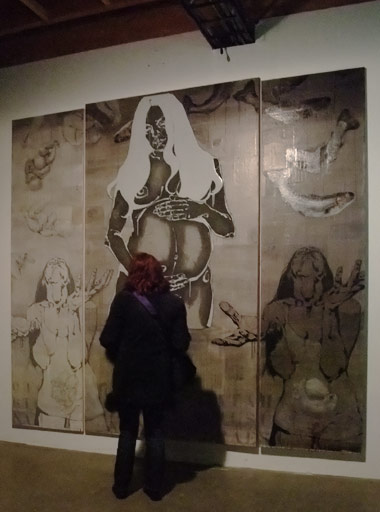 Some artists in the show responded to the themes of life and death, heaven and hell, or judgement such as Maayke Schuitema’s “Magna Mater”. Here a pregnant woman has replaced the crucifix and is flanked by scenes of women who are literally and symbollically juggling symbols of birth and death. Each woman’s womb bears either an symbol for life or death.
Some artists in the show responded to the themes of life and death, heaven and hell, or judgement such as Maayke Schuitema’s “Magna Mater”. Here a pregnant woman has replaced the crucifix and is flanked by scenes of women who are literally and symbollically juggling symbols of birth and death. Each woman’s womb bears either an symbol for life or death. Anyone familiar with contemporarty art can’t help but think of
Anyone familiar with contemporarty art can’t help but think of 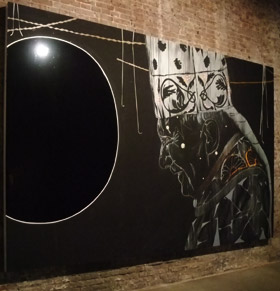
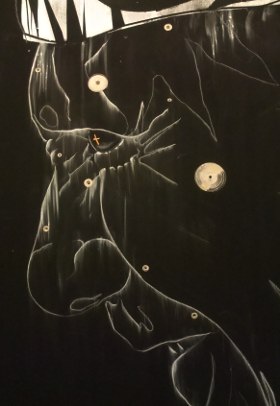
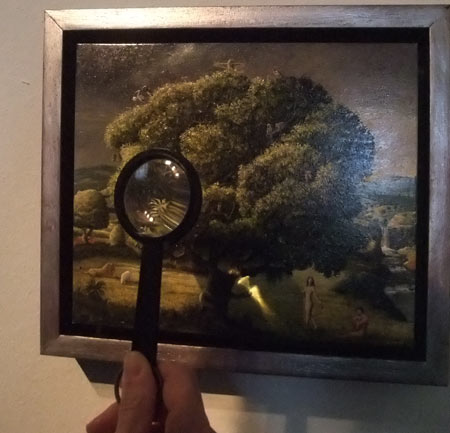

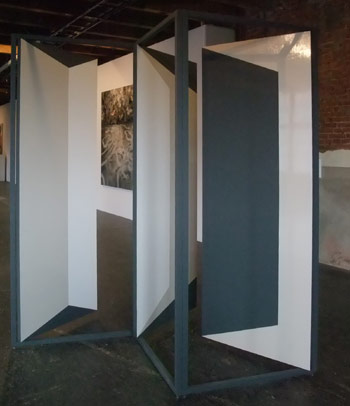
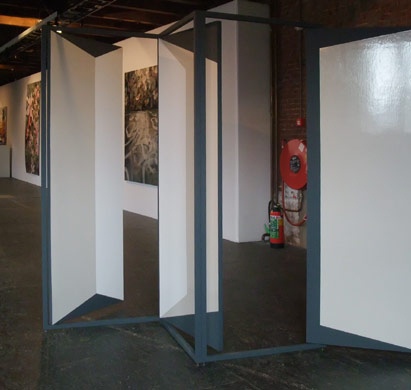
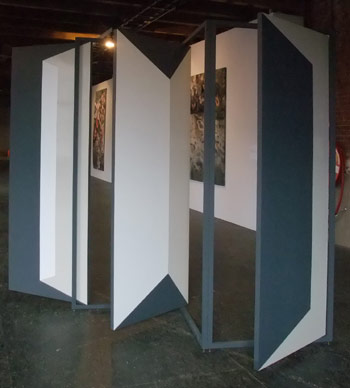
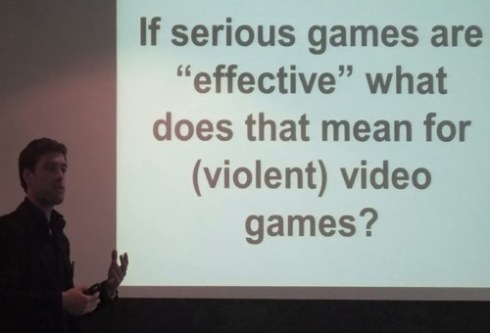 Dutch journalist and game researcher,
Dutch journalist and game researcher, 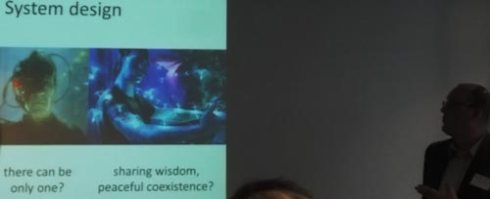


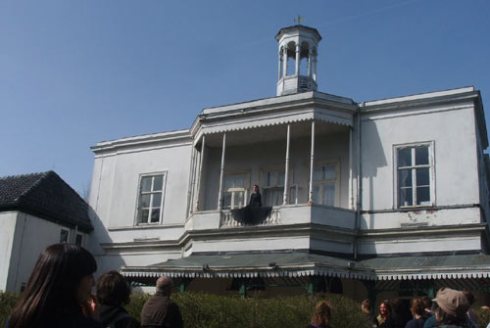
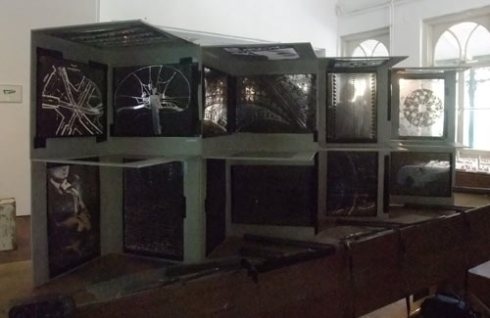 Installation by Marijke van Gorp, Ludmila Rodrigues, Mike Rijnierse and Nenad Popov at Villa Ockenburgh, Loosduinen, The Hague, April 10th, 2011.
Installation by Marijke van Gorp, Ludmila Rodrigues, Mike Rijnierse and Nenad Popov at Villa Ockenburgh, Loosduinen, The Hague, April 10th, 2011.